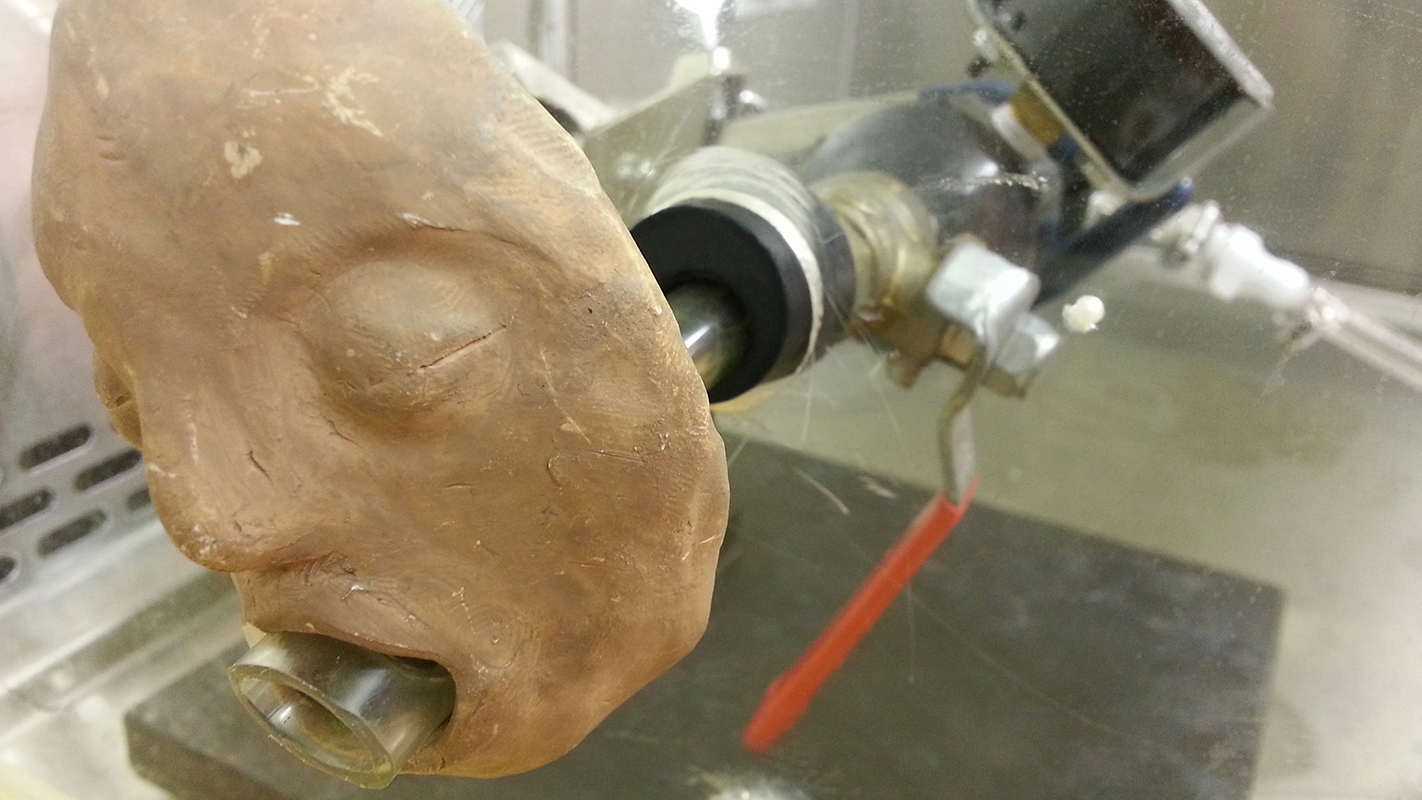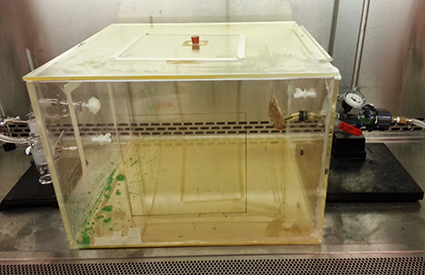The Vomiting Machine: How Researchers Are Using Fake Barf to Help Protect Public Health

Tucked away in a quiet lab on NC State’s Raleigh campus is something that looks like a glorified air compressor with a grotesque clay face. It’s called “the vomiting machine” and it does exactly what you think it does. Researchers are using it to study one of the most widespread pathogens in the United States: norovirus.
Norovirus is a group of more than 30 related viruses that can cause vomiting and diarrhea. Norovirus affects about 20 million people each year in the U.S., with infections that can lead to hospitalization and occasionally to death, particularly in the elderly. About a quarter of the time, “noro” infection is obtained by consuming contaminated foods or water. However, it is most often spread between people in close contact with each other. The epidemic GII.4 strain predominates, but there are others.
But how, exactly, is noro transmitted from person to person?
The Question
“Epidemiological studies have suggested that norovirus can be ‘aerosolized’ through vomiting, meaning that small particles containing norovirus can become airborne when someone throws up,” says Grace Thompson, a recent Ph.D. graduate whose work at NC State focused on how norovirus spreads through vomiting and how long it is detectable in vomit. (Fun fact: noro can still be detected in dried vomit after six weeks.)

“According to outbreak reports, it appears that people can become infected with noro if they are directly or indirectly exposed to vomiting events,” Thompson explains. “If aerosolized particles land on a countertop, you could also touch the counter with your hand, then touch your hand to your mouth, leading to infection.”
But while norovirus aerosolization by vomiting has long been suspected, no one knew if it was actually occurring. This is the sort of question that Lee-Ann Jaykus’s lab lives for.
Jaykus is a professor of food science at NC State and scientific director of the U.S. Department of Agriculture-National Institute of Food and Agriculture Food Virology Collaborative, also known as NoroCORE (short for Norovirus Collaborative for Outreach, Research, and Education). They are, quite simply, norovirus experts.
To see if vomiting could really aerosolize norovirus, researchers in Jaykus’s lab (including Grace Thompson) needed a controlled way to observe and study vomiting over and over again. They needed a vomiting machine.
How A Vomiting Machine Works
As you may imagine, there is a limited demand for vomiting machines, so the researchers had to design and build their own. They found a partner in Dominic Libera, a graduate student in NC State’s civil, construction and environmental engineering department in Francis de los Reyes’s lab. They also needed data upon which to build their model. Dr. Kenneth Koch, a gastroenterologist with Wake Forest University, provided that expertise.
Working together, the researchers created a machine that is essentially a scaled-down version of the mouth, esophagus, and stomach – made of tubes and a pressure chamber that passes through a clay face to give it the correct vomiting angle. The machine is designed (using engineering similitude principles) to let researchers control the pressure and volume of the vomit, in order to mimic a range of natural vomiting behaviors. The whole thing is enclosed in a sealed plexiglas box and placed under a biosafety hood. (A short video of the machine can be seen here.)
Instead of vomit, the researchers use liquid solutions of different viscosities or thicknesses as “artificial vomitus” to reflect different stages of digestion. And, since they cannot use real norovirus, they used a bacteriophage called MS2, which is a virus that infects E. coli but is harmless to humans. MS2 is easy to culture and is a common stand-in for noro.
Putting The Machine To Work
In 2012 and 2013, the team did extensive testing of the machine, to make sure that it was scaled appropriately and worked the way they wanted it to. And in 2014, Thompson began using the machine for formal experiments.
And what did they find? Well, virus was indeed aerosolized. Although the amount of MS2 aerosolized as a percent of total virus “vomited” was relatively low (less than 0.3 percent), vomit from infected people contains millions of particles. When the math is done, this means that the actual amount of virus particles aerosolized during a single vomiting event ranges from only a few into the thousands, perhaps more. (This work was recently published in PLOS ONE. More information on the findings is available here.)
“And that is enough to be problematic because it only takes a few, perhaps less than 20, to make a susceptible person ill” Jaykus says. “This machine may seem odd, but it’s helping us understand a disease that affects millions of people. This is work that can help us prevent or contain the spread of norovirus – and there’s nothing odd about that.”
- Categories:


